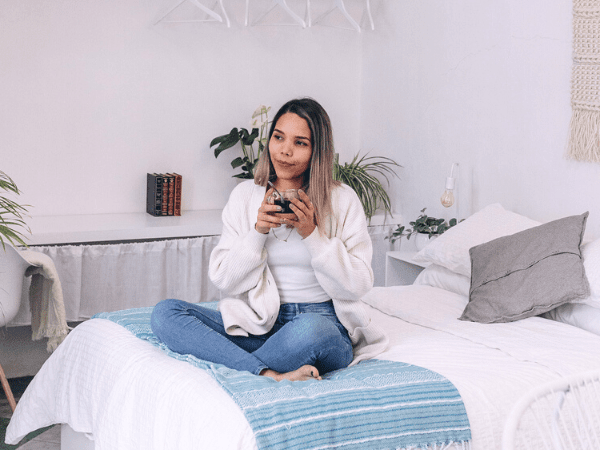Today blogging is a popular activity, and many run web blogs or have social media blogs. People become famous and get handsome profits if their blog attracts an audience and provides unique, quality content. Running a blog is not only about writing engaging and informative posts.
Your most fascinating blog post ideas cannot get proper attention if not accompanied by decent images. It sounds challenging for a blog writer to become a graphic designer or photographer.
But actually, you should not. Here are simple solutions for creating attractive images for your posts.
Reasons to Add Pictures to Your Blog
Visuals are pretty darn important for your every blog post. You know that nowadays, people prefer skimming and scrolling to attentive reading. And when they stumble upon a catchy image, blog readers will become more attentive to what to tell them about.
Images do not make your post longer – they complement the text and make it more digestible for modern readers. Let’s see what are the benefits of adding pictures to a blog post:
- Visuals reinforce your identity and make you, as the author, more recognizable.
- Images help the blog post emotionally appeal to the audience.
- Blog posts complemented with a powerful image are more shareable.
- People follow directions set in a text if they are illustrated.
- Text with attractive images has higher retention if compared to posts with no pictures.
- Visuals contribute to search engine optimization as visitors spend more time on pages with images.
Types of Visuals in Your Blog Posts
Consider that not every visual type will match your post. We suggest you look at three forms of visual content to complement your text perfectly.
Images
Bloggers can find free images on the web or try to design them on their own. Today creating illustrations is not as challenging as there are many editing tools for that. A good idea is to put a text, quote, or some other data on a colorful background. You can hire a designer or develop these creative skills.
Photos
You can take photos on your own to meet the needs of your blog content. You better know what you write and how to complement it wisely with proper photos. You can even use your smartphone but mind photo quality and lighting. Struggle with high-quality images? Use free photo stock libraries for your blog.
RELATED: Where To Find FREE Stock Photos Online
Videos
Video is the most popular type of visual content that can engage a large audience. You can embed a video from YouTube or create short videos using your smartphone. Choose a professional editing tool and a video converter for mac to make your content engaging and accessible. Videos play a crucial role in web design and help solve many issues.
Gifs
Animations help capture readers’ attention and easily convey emotions. Gifs will make your content stand out and encourage the audience to interact. It is possible to use stock gifs, hire a specialist and learn to create them personally. It depends on your talent, time, and budget.
Infographics
It is a meaningful and engaging type of visual content for blogs. Using infographics depends on your blog topic. They help present complex data and instructions in a simple way. Bloggers can use many great tools for creating compelling infographics.
Best Tools for Creating Blog Images
Now we will explore programs for creating engaging images. There are free and paid tools on the market for advanced users and beginners. If you like a paid tool, use a trial period to see if it meets your needs. Decide what suits you and select the best option for you.
Beginner Programs
Image creation tools for beginners should have a straightforward interface and basic templates and features. Canva is the best solution for novice image designers. It has a huge library of stock illustrations, templates, and even a brand kit. Users can create libraries of their templates and be consistent when creating images for their blogs.
Stencil, Snappa, and Crello are also good image designing options for beginners. You can benefit from a trial period and then choose your plan. Create stunning visuals without much time and effort with these creative tools for beginner image designers.
Intermediate Programs
When choosing intermediate tools, you should have a little experience in graphic designing and creating images. They have a more complex interface and advanced features. GIMP is a free image editor with a plethora of sophisticated tools. Users can transform their images into art creations thanks to multiple design elements.
Choose among PicMonkey, Paint.NET, BeFunky, and other programs that provide incredible image editing results. Some tools require a download, others are available online, so choose yours and design brand-new images for your blog.
Advanced Programs
Now let’s explore powerful tools for creating blog illustrations. They are difficult to use, expensive, and require special skills in designing and image editing. You should spend some time mastering these programs.
But once you learn how to use advanced tools, you will get fascinating visuals. Use Pagemodo, Adobe Spark, or PhotoPea and generate unique visual content. They will enable you to create infographics, quotes, collages, logos, and more.
Guide for Designing Engaging Images
These tips will help you create powerful illustrations for your blog posts.
#1 Choose Your Style
You should be consistent with the image style you select in a blog post or blog category. The best solution would be to accompany all posts with images designed in one style. In such a way, your blog will have a distinct look, and people will easily remember and later recognize it.
You can stick to one color palette or layout when designing your images. You can find a set of templates in one style in programs for creating images.
Just do not be afraid to show your imagination and creativity when picking up the style for catchy images.
#2 Find a Background Image
The easiest way to design a customized image for your blog post is to put text on the picture. Bloggers can add quotes from their article, data, statistics, or other interesting info to a background image.
And here comes the question of how to choose a proper image. You should stick to a plain layout but avoid white backgrounds. If you download images from stock libraries, make sure there are no watermarks. There are many sites with free pictures that are often categorized for users’ convenience.
#3 Make Image Text Attractive
It’s crucial to add meaningful text to the image, but it should also look good. A writer needs to select proper colors and fonts. They should be distinct, readable, and attractive.
Professional bloggers use special tools to create fascinating textual components for their blog images. They are mainly easy to use and have a rich library of templates and text formatting features. There you can find how to pair fonts for your blog post.
They suggest millions of free icons and illustrations you can use for designing an amazing blog image.
How to Incorporate Images Effectively
Once you create stunning visuals, it’s time to find how to add them to your blog effectively.
- Make sure your images are content-relevant and not simply decorate the blog post. You should think about the message it conveys. A perfect image is meaningful and emotional.
- An image for your blog should have a high resolution, have no distortions, and contrast with the text.
- It’s recommended to put an image after every 400 words. People tend to read the text above and below the picture, so add relevant info there. You can also provide captions for pictures.
- In order to make the text more skimmable, you can utilize headings, subheadings, bullet points, etc along with visuals. They will create a stunning effect and make your blog post easy and interesting to read.
- If you create images on your own, you can add watermarks to your pictures. People will be less likely to steal your pictures for their benefit. And when such branded images are found on the web, users will search for your blog.
Final Thoughts
“A picture is worth a thousand words”, and now you know how to do it in practice. There is nothing challenging in complementing your blog post with an attractive visual.
Choose your visual content type, be creative, and follow tips for creating and placing your image. We wish you good luck and hope your posts will stand out and engage a large audience.













